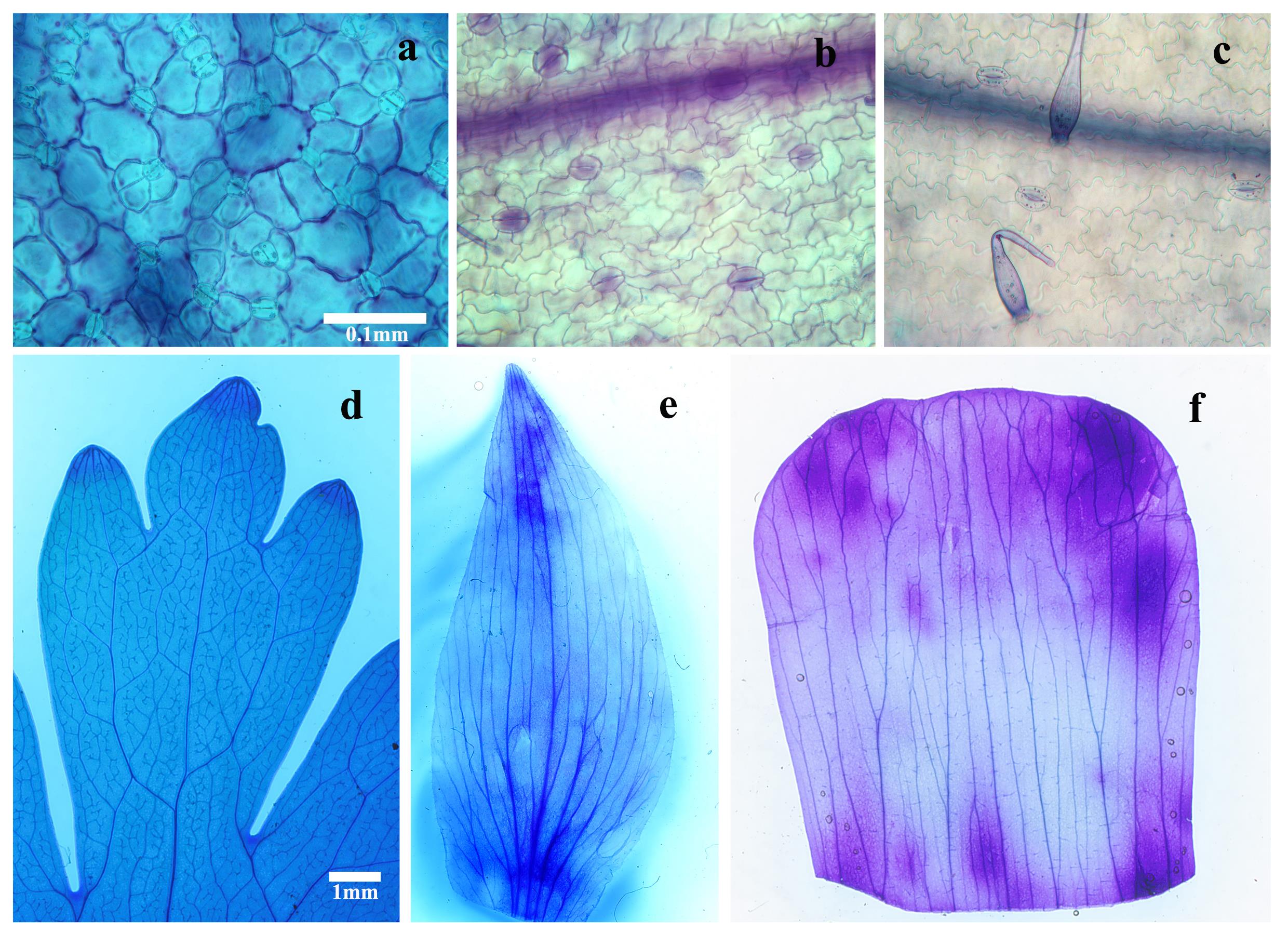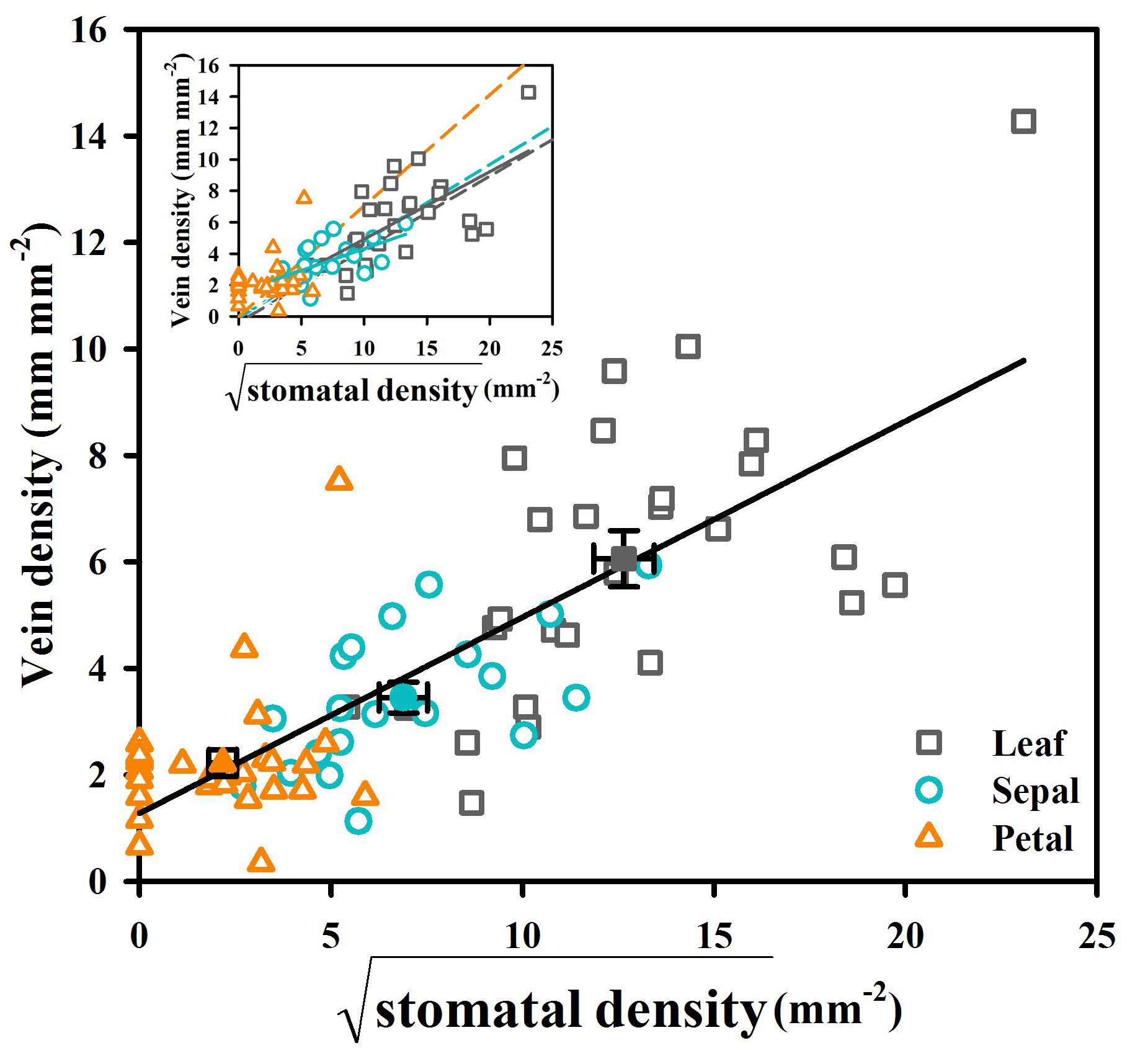Flowers are one of the key evolutionary innovations that characterize angiosperm diversification, with selection of floral traits by pollinators considered to be an important driver of this diversity.
However, because the capacity to match hydraulic supply in the leaf with demand for liquid water is emerging as an important driver of plant adaptation, it seems timely to consider whether these processes also affect floral traits.
Understanding the evolution and development of floral traits in the broader context of whole-plant physiology would provide new insight into why flowering plants have prevailed across ecosystems globally.
Many gaps remain in the understanding of the fundamental links between floral structure and physiological function. One such gap is the relationship between tissues regulating flower hydration though water supply (the venation), and those that determine the transpiration rate in flowers.
Recently, Prof. ZHANG Shi-Bao’s group from Kunming Institute of Botany, Chinese Academy of Sciences (KIB/CAS) and Prof. Timothy J. Brodribb from University of Tasmania, examined relationships between veins, stomata and epidermal cells in leaves, sepals and petals of 27 angiosperms to determine whether common spacing rules applied to all tissues.
Although the mean stomatal and vein densities of flower parts were low and proportional with leaves in our sample, the correlation between these two tissues was not present within petals as it was in leaves and sepals.
The results suggest that although plant evolution to enhance photosynthetic rates in leaves can be easily visualized as a process of selection for small cell size, leading to high densities of stomata and veins, in flowers, selective pressure to maximize the benefit to cost ratio of investment in vascular and stomatal tissue appears to be less intense most likely because of their different function.
Weaker linkages between veins and stomata in petals, however, do not suggest that water supply and demand are not balanced, but instead hint at the potential contribution of the cuticle to water loss from petals, and/or phloem-driven water supply.
The study entitled "Similar geometric rules govern the distribution of veins and stomata in petals, sepals and leaves" has been published online in New Phytologist. The study was supported by the National Nature Science Foundation of China and a visiting scholarship from Chinese Academy of Sciences.

Fig. 1 Photomicrographs showing the stomata and vascular structure of a cleared leaf (a, d), sepal (b, e), and petal (c, f) from a representative species quilegia vulgaris (Image by KIB)

Fig. 2 Observed relationships between vein and √stomatal density in the leaves, sepals, and petals of 27 angiosperm species. Insert shows observed relationships between vein and √stomatal density within all organ types (solid lines) compared with modelled relationships (dashed lines). (Image by KIB)
Contact:
YANG Mei
General Office
Kunming Institute of Botany, CAS
Email: yangmei@mail.kib.ac.cn
(Editor:YANG Mei)




